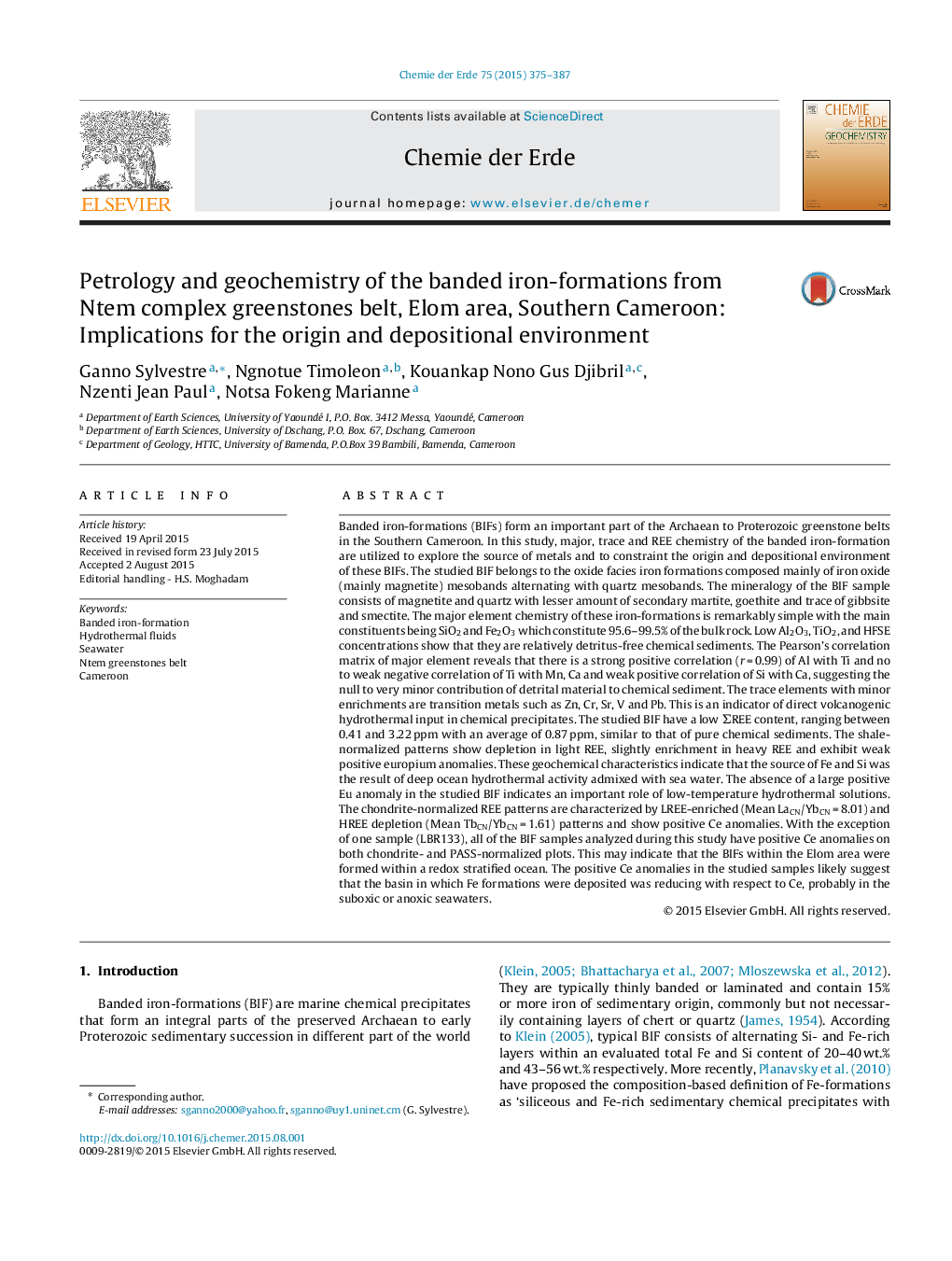| کد مقاله | کد نشریه | سال انتشار | مقاله انگلیسی | نسخه تمام متن |
|---|---|---|---|---|
| 4406815 | 1307321 | 2015 | 13 صفحه PDF | دانلود رایگان |
Banded iron-formations (BIFs) form an important part of the Archaean to Proterozoic greenstone belts in the Southern Cameroon. In this study, major, trace and REE chemistry of the banded iron-formation are utilized to explore the source of metals and to constraint the origin and depositional environment of these BIFs. The studied BIF belongs to the oxide facies iron formations composed mainly of iron oxide (mainly magnetite) mesobands alternating with quartz mesobands. The mineralogy of the BIF sample consists of magnetite and quartz with lesser amount of secondary martite, goethite and trace of gibbsite and smectite. The major element chemistry of these iron-formations is remarkably simple with the main constituents being SiO2 and Fe2O3 which constitute 95.6–99.5% of the bulk rock. Low Al2O3, TiO2, and HFSE concentrations show that they are relatively detritus-free chemical sediments. The Pearson’s correlation matrix of major element reveals that there is a strong positive correlation (r = 0.99) of Al with Ti and no to weak negative correlation of Ti with Mn, Ca and weak positive correlation of Si with Ca, suggesting the null to very minor contribution of detrital material to chemical sediment. The trace elements with minor enrichments are transition metals such as Zn, Cr, Sr, V and Pb. This is an indicator of direct volcanogenic hydrothermal input in chemical precipitates. The studied BIF have a low ΣREE content, ranging between 0.41 and 3.22 ppm with an average of 0.87 ppm, similar to that of pure chemical sediments. The shale-normalized patterns show depletion in light REE, slightly enrichment in heavy REE and exhibit weak positive europium anomalies. These geochemical characteristics indicate that the source of Fe and Si was the result of deep ocean hydrothermal activity admixed with sea water. The absence of a large positive Eu anomaly in the studied BIF indicates an important role of low-temperature hydrothermal solutions. The chondrite-normalized REE patterns are characterized by LREE-enriched (Mean LaCN/YbCN = 8.01) and HREE depletion (Mean TbCN/YbCN = 1.61) patterns and show positive Ce anomalies. With the exception of one sample (LBR133), all of the BIF samples analyzed during this study have positive Ce anomalies on both chondrite- and PASS-normalized plots. This may indicate that the BIFs within the Elom area were formed within a redox stratified ocean. The positive Ce anomalies in the studied samples likely suggest that the basin in which Fe formations were deposited was reducing with respect to Ce, probably in the suboxic or anoxic seawaters.
Journal: Chemie der Erde - Geochemistry - Volume 75, Issue 3, October 2015, Pages 375–387
